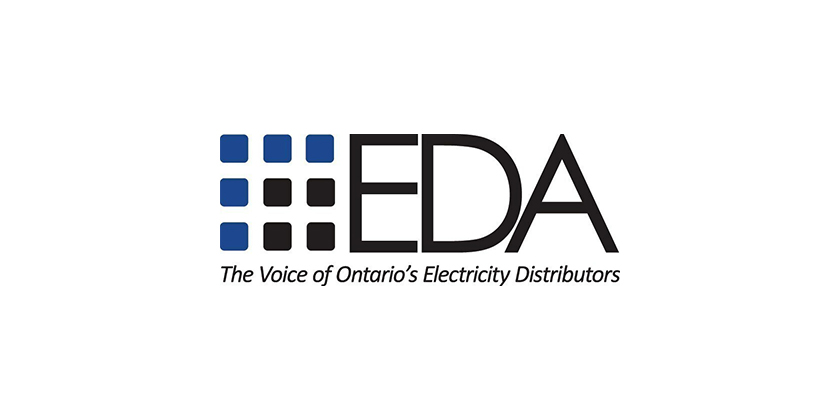EDA Safety Forum looks at Current Safety Issues and Managing Challenges of COVID-19

April 19, 2021
By Blake Marchand
Presented in partnership with Hydro One, The EDA Safety Forum – held on March 23, 2021 – featured noted safety and legal experts who delivered actionable insights on current safety issues, research, and best practices relevant to one of the most important priorities and performance metrics for local distribution companies in Ontario.
The Forum had over 50 in attendance and featured the following agenda and expert speakers:
- The Ontario Occupational Health & Safety Act, David Reiter, Partner, Aird & Berlis LLP
- IESO and the Pandemic’ s Impact on the Electricity System, Kausar Ashraf, Senior Manager, Demand & Conservation Planning, IESO
- ESA – COVID-19 Proactive Response and Evolving Approaches, Nansy Hanna, Senior Director, Engineering & Regulations, ESA
- How has the Safety Training Program Changed, Al Leger, Manager, Powerline Apprenticeship Training, IHSA
- Pandemic Safety: How Utilities Have Adapted to Keep Employees Safe During COVID-19, Chong Kiat Ng, Vice President, Distribution, and Teri French, Vice President, Forestry, Hydro One

“The EDA held a successful Safety Forum on March 23 with expert best practices presented and valuable industry knowledge shared. We know that a great many EDA members, and the electricity sector as a whole, responded with exceptional efforts over the last year and that they continue to do so in 2021,” commented Teresa Sarkesian, President & Chief Executive Officer, Electricity Distributors Association. “The EDA Safety Forum sessions highlighted these remarkable efforts that ensured the safety of employees and the reliability of the electricity system during the pandemic, plus more. My thanks go out to everyone who attended from across the province for an engaged discussion on safety.”
Following opening remarks from Sarkesian, David Reiter provided some best practices with respect to the Occupational Health and Safety Act and handling workplace safety incidence.
In the first portion of his presentation, David Reiter, Partner, Aird & Berlis LLP focused on training and training oversight. Ensuring that employees receive proper health and safety training and that there is a record what training and inspections have taken place. There should also be an oversight systems and corrective measures for those not following protocol, that Reiter said should also be documented.
Reiter noted that safety programs should be monitored and adjusted over time, as best practices and safety requirements evolve. Also adding that, inspections are meant to be a preventative measure, an incident or complaint isn’t needed to trigger inspection, inspectors will sometimes conduct inspections spontaneously.
Reiter recommends designating one point person to cooperate with the inspector/inspection who knows where everything is, what procedures are in place and, has all updated/correct information. When it comes to incidence, he recommends the same, that one person should be pre-designated to run/control the situation.
When an incident occurs, the scene should be secured, Reiter noted that if anything is moved or disrupted that may make investigators suspicious it was done to hide something. The next step is to talk to those involved to nail down what led to the incident, the initial impression may not be accurate. After that you want to deliver applicable notices, particularly those that involve an injury, even if its minor.
You will then need to conduct your investigation into the incident and collect all of your relevant records with regards to training and inspections. You may also want an investigator/council to conduct interviews with those involved.
Improvements to safety programs/infrastructure as a result of an incident should be addressed in a timely manner. Not all incidents are a result of negligence, there may be gaps or blind spots that need to be addressed/learned from, and quick action shows that you are serious about safety.
Kausar Ashraf from IESO presented on how the pandemic has impacted demand, as well as providing insight into their projections moving forward.
“What we were able to do is stitch together various data sets, smart meter data included, in order to distinguish these segments, to see what’s happening to residential customers, commercial and industrial demand, as well as small businesses; so, for this analysis that I’m presenting here, we’ve mined through a fair bit of data,” said Ashraf at the top of her presentation.
Ashraf noted that weather is a main factor in demand. When its hot during the summer and cold during the winter demand goes up, which was compounded by the pandemic because so many people were working from home and running AC and heat longer because they were home more.
Demand dropped over 10% during peak lockdown periods. Largest increase to peak occurred during summer months due to the suspension of Industrial Conservation Initiative and increased residential air conditioning load. Since the fall, energy and peak has returned closer to pre-pandemic levels.
Industrial and commercial demand dropped by 20% during closures in March and April and had a sharp 14% increase for stage 2 and 3 re-openings. Demand is still down around 5-6%.
The pandemic has understandably caused some uncertainty on the demand outlook. IESO’s annual planning outlook was broken into two scenarios: scenario one considers rapid recovery with demand returning to pre-pandemic levels by 2022. The second scenario factored a more significant economic downturn with demand recovering slowly.
Forecast updates include an increase in demand for the agricultural sector (950 MW increase over previous forecast), near-term increases in residential consumption, rail and transit electrification with accelerated timelines, and near-term increases in mining, with existing mines end of life assumptions beginning in 2028.
The commercial sector forecasts a decrease in consumption due to changes in office space uses, retail and restaurant closures, and changes to school and university schedules. There’s also an expected increase to warehousing demand as a result of more online shopping.
The Forum concluded with a panel discussion on how utilities have adapted during COVID-19 with Chong Kiat Ng (CK), Vice President, Distribution, and Teri French, Vice President, Forestry, Hydro One. Coincidentally, both took on their current roles during the pandemic. CK and French discussed their transition and how the experienced the challenges of pandemics.
French was with Enercare when the pandemic hit, she noted that although they had business continuity plans around systems and facilities, although pandemic response was not part of it, “At the very beginning it was daunting, we had to keep our customers and employees safe, but the information was so varied, it was dynamic, it was coming in so quickly, synthesizing through it was overwhelming.”
Coming into a new role at a new company, unlike CK who was already with Hydro One in another capacity, presented another challenge for French. Which included not being able to meet many of the people she would be working with in person.
“Onboarding onto a new organization has a lot of challenges in the new way of working – to do anything that used to be a quick conversation at the water cooler, or you could grab someone quick after a meeting and have a quick chat, it’s no longer like that. So, we ‘ve spent so much of our time in meetings, back-to-back meetings, it’s a struggle. And when you have a field-based organization so widely dispersed through the province, it puts on that incremental challenge of really starting to be able to get those personal connections. That’s been the biggest challenge for myself, is really being able to connect with people in a new virtual platform.”
When it comes to managing confined spaces in the field, getting to the jobsite, and operating in bucket trucks, CK explained, “that was a topic of lots of conversation over the past year or so. We did hit the pause button when the pandemic hit because we did not have a playbook on how to do many things.”
That pause allowed them to recalibrate and get a better idea of how to continue to operate safely, and adjust as more and more information came out, “The bucket truck is a challenge because there are only so many of them and the work has to be done. We were able to come up with ways to make sure if a job required two people in the truck, then they would drive around as a team of two and try to keep them together as much as possible, and asked them to wear masks while driving,” explained CK. On top of that workers were supplied with the proper PPE for when social distancing was not possible.
Looking at her time with Enercare, French said there were a lot of similarities to how they managed the pandemic, although she said, “one of the key differences, I would think, with Enercare, is the residential customer base. Because Enercare is a personal service and installation organization, much of the work done by technicians is in independent customer’s homes. So, that was a bit of a challenge at the very beginning with some of the unknowns that were there, particularly around our technicians who were visiting multiple customers a day, and how we would ensure the safety of both the customers and the employees.”
When it comes to her role with Hydro One, a big challenge is how large the coverage area and the geographical span, “really, the key to pandemic response is making sure that all of our teams have very clear, definitive actions on specific safety protocols. One of the key elements when you have a workforce of that size, is making sure you take all of this information, synthesize the important points to get to the field staff, and making sure you have a constant communication flow to our field force as well as back, so a lot of different types of websites, different types of notifications,” explained French.
Ultimately, to ensure field teams had the resources to do what they needed to do safely, which includes the ability to communicate with the company easily.
Another important focus was ensuring they were correctly interpreting the policy related information being passed down by government as well as guidelines being issued by public health.
What’s next? Mark your calendars for the EDA’s Construction and Infrastructure Forum on May 4 with a half-day online session that will include a mix of legal, regulatory and sector perspectives, with leading experts speaking to unique constraints and considerations, plus many more events planned for 2021. Visit the EDA website at eda-on.ca for all registration and event details.




![Guide to the Canadian Electrical Code, Part 1[i] – A Road Map: Section 52 — Diagnostic imaging installations](https://electricalindustry.ca/wp-content/uploads/2022/11/Guide-CE-Code-2-768x432.png)





![Guide to the Canadian Electrical Code, Part 1[i] – A Road Map: Section 52 — Diagnostic imaging installations](https://electricalindustry.ca/wp-content/uploads/2022/11/Guide-CE-Code-2.png)






